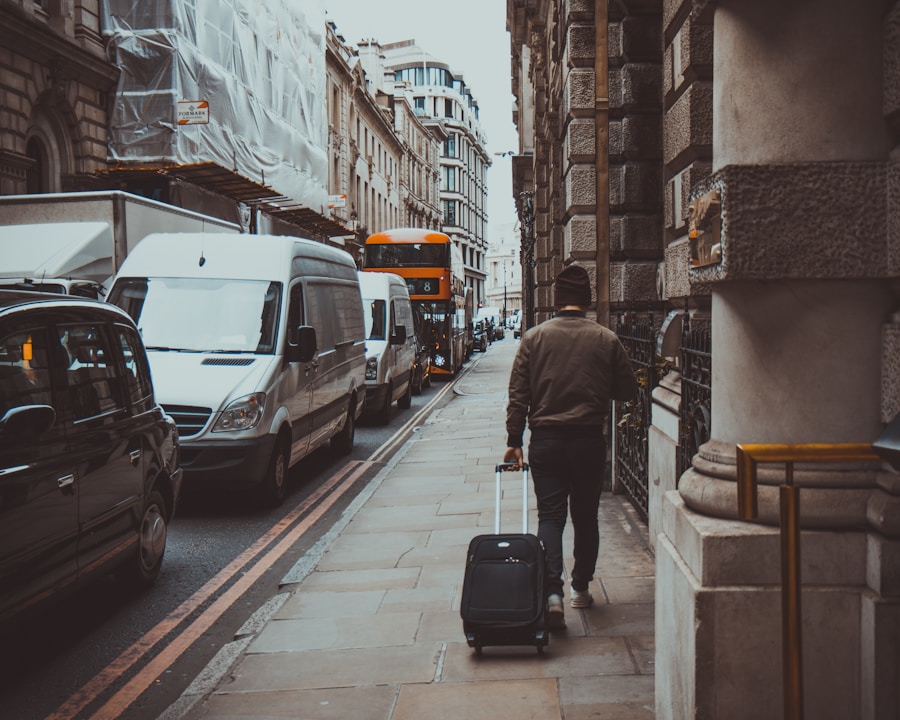From Wheelchairs to Walking Aids: Navigating Travel Mobility Options

Travel mobility is an essential aspect of life for many individuals with mobility challenges. It allows them to explore new places, experience different cultures, and create lasting memories. Traveling can also provide a sense of independence and freedom, as it allows individuals to break free from the constraints of their everyday environment. Additionally, travel mobility can have a positive impact on mental health, as it provides opportunities for social interaction and personal growth. For many people with mobility challenges, the ability to travel is a fundamental human right, and it is important to ensure that they have access to the necessary resources and support to make their travel experiences as seamless and enjoyable as possible.
Furthermore, travel mobility can also have economic benefits for individuals with mobility challenges. By being able to travel, they can access new job opportunities, attend conferences and networking events, and participate in professional development activities. This can ultimately lead to greater financial independence and career advancement. In addition, accessible travel options can also benefit the tourism industry by attracting a wider range of customers and promoting inclusivity. Overall, travel mobility is an important aspect of life for individuals with mobility challenges, and it is crucial to ensure that they have the support and resources they need to travel with ease and confidence.
Types of Mobility Aids for Travel
There are various types of mobility aids that can help individuals with mobility challenges navigate through their travels with ease. One common type of mobility aid is a wheelchair, which provides individuals with the ability to move around independently and comfortably. There are manual wheelchairs, which are propelled by the user or a companion, and there are also electric wheelchairs, which are powered by a battery and provide greater independence for the user. Another popular mobility aid is a mobility scooter, which is similar to an electric wheelchair but is designed for outdoor use and longer distances. These scooters are often used by individuals who have difficulty walking long distances but do not require a full-time wheelchair.
In addition to wheelchairs and scooters, there are also other types of mobility aids that can be helpful for travel, such as walking canes, crutches, and walkers. These aids provide support and stability for individuals who may have difficulty walking or standing for long periods of time. For individuals who have limited upper body strength or dexterity, there are also assistive devices such as reachers and grabbers that can help them access items that may be out of reach. Overall, there are a wide range of mobility aids available to help individuals with mobility challenges travel with comfort and confidence.
Tips for Traveling with Mobility Challenges
Traveling with mobility challenges can present unique challenges, but with careful planning and preparation, it is possible to have a smooth and enjoyable travel experience. One important tip is to research and plan ahead for accessible accommodations, transportation, and attractions at your destination. This may include booking wheelchair-accessible hotel rooms, arranging for accessible transportation options, and identifying accessible tourist attractions and restaurants. It is also important to communicate your specific needs and requirements to airlines, hotels, and other service providers in advance to ensure that they can accommodate you effectively.
Another important tip is to pack essential items such as medications, medical supplies, and mobility aids in your carry-on luggage. This will ensure that you have access to these items at all times during your travels, even if your checked luggage is delayed or lost. It is also helpful to bring along any necessary documentation, such as a doctor’s note or a disability parking permit, to facilitate smooth travel experiences. Additionally, it is important to be proactive in advocating for your needs during your travels, whether it is requesting assistance from airport staff or asking for accommodations at tourist attractions. By being prepared and proactive, individuals with mobility challenges can ensure that their travel experiences are as comfortable and enjoyable as possible.
Accessible Travel Destinations
There are many destinations around the world that are known for their accessibility and inclusivity for individuals with mobility challenges. One popular destination is London, which has made significant efforts to improve accessibility in recent years. The city offers accessible public transportation options, such as buses with ramps and designated wheelchair spaces, as well as accessible tourist attractions such as the British Museum and the London Eye. Another accessible destination is Barcelona, which has made strides in creating a more inclusive environment for individuals with mobility challenges. The city offers accessible public transportation options, such as wheelchair-accessible buses and metro stations, as well as accessible tourist attractions such as Park Guell and the Sagrada Familia.
In addition to London and Barcelona, there are many other destinations around the world that are known for their accessibility and inclusivity. For example, Sydney, Australia offers accessible public transportation options and attractions such as the Sydney Opera House and Bondi Beach. Amsterdam, Netherlands is known for its flat terrain and accessible public transportation options, making it a popular destination for individuals with mobility challenges. Overall, there are many destinations around the world that offer accessible accommodations, transportation, and attractions, making it possible for individuals with mobility challenges to explore new places and create lasting memories.
Traveling with a Mobility Service Animal
For individuals with mobility challenges who rely on service animals for assistance, traveling with their furry companions can present unique challenges. However, there are specific guidelines and regulations in place to ensure that individuals with service animals can travel with ease and confidence. In many countries, service animals are legally allowed to accompany their owners in various public spaces, including airports, airplanes, hotels, restaurants, and tourist attractions. It is important for individuals traveling with service animals to be aware of the specific regulations in place at their destination and to carry any necessary documentation, such as a service animal certification or identification.
When traveling with a service animal, it is important to communicate your specific needs and requirements to airlines, hotels, and other service providers in advance. This may include requesting accommodations such as an aisle seat on an airplane or a pet-friendly hotel room. It is also important to ensure that your service animal is well-behaved and trained to navigate through various travel environments. By being prepared and proactive in advocating for your needs, individuals with mobility challenges can ensure that their service animals can accompany them on their travels with ease and confidence.
Navigating Airports and Public Transportation with Mobility Aids
Navigating through airports and public transportation systems can present unique challenges for individuals with mobility aids. However, there are specific resources and services available to help make these experiences as smooth and comfortable as possible. Many airports offer assistance programs for individuals with mobility challenges, such as wheelchair assistance or escort services. It is important for individuals to communicate their specific needs and requirements to airport staff in advance so that they can receive the necessary support upon arrival at the airport.
In addition to airport assistance programs, many public transportation systems offer accessible options for individuals with mobility challenges. This may include wheelchair-accessible buses or trains, designated seating areas for individuals with disabilities, and assistance from transit staff when boarding or disembarking from vehicles. It is important for individuals to research the accessibility options available at their destination in advance so that they can plan their travels accordingly. By being proactive in seeking out assistance and resources, individuals with mobility challenges can navigate through airports and public transportation systems with ease and confidence.
Resources for Accessible Travel Information
There are many resources available to help individuals with mobility challenges plan their travels effectively and access the necessary support and accommodations. One valuable resource is online travel guides specifically tailored for individuals with disabilities or mobility challenges. These guides provide information on accessible accommodations, transportation options, tourist attractions, and other travel-related services at various destinations around the world. Additionally, there are many organizations and advocacy groups that provide valuable information and support for accessible travel.
Another valuable resource is the Americans with Disabilities Act (ADA) website, which provides information on the rights of individuals with disabilities when traveling in the United States. The website offers guidance on accessible transportation options, accommodations, and public spaces, as well as information on how to file a complaint if your rights are violated during your travels. Additionally, many airlines and hotels have dedicated customer service teams or accessibility coordinators who can provide information on accessible travel options and assist with making necessary arrangements.
Overall, there are many resources available to help individuals with mobility challenges plan their travels effectively and access the necessary support and accommodations. By utilizing these resources and being proactive in advocating for their needs, individuals with mobility challenges can ensure that their travel experiences are as comfortable and enjoyable as possible.



